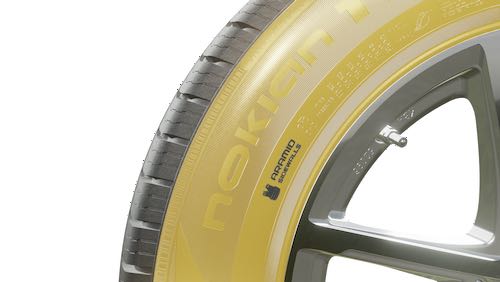When driving during wintertime in winter conditions, you need winter tires or winter-approved tires. With winter conditions you tend to refer to conditions that include snow, ice, slush, and low temperatures. Winter tires have better performance versus all-season tires already when the temperature drops below zero degrees Celsius. This is because the rubber compound in all-season tires has been optimized for warm temperatures. They won’t be soft and flexible at low temperatures; they will become hard. Tires achieve some of its grip by being soft and being able to push some of the rubber into the micro-cavities on the surface. When the tires are hard and can’t do this, you will lose some of the grip. It is essential to change as the temperature drops and not wait for the snow to arrive. If the snow arrives it is already too late for you to change unless you can do it without driving somewhere.
When it comes to winter tires, you have a few options depending on where you live. The standard winter tires are only for winter use, so you will need to have all-season tires and alternate between them depending on the season. You also have the all-weather tires option which are winter approved, which can provide all-year-round driving safety. This will enable you to use only one set of tires and not have to worry about when to change tires. The beauty is that you are always ready to drive regardless of weather conditions, which can be very convenient for areas with very unpredictable weather or where you have to drive between different weather conditions.
If you select a dedicated winter, you have the non-studded tires that are legal in all states and provinces in North America. They don’t have metal studs and instead use unique tread pattern and grip particles to achieve grip on both ice and snow. Some countries will allow for studded tires, which use metal studs. They come with some restrictions depending on states and provinces. Some places only allow them for a specific period of time, and some have banned them completely. If you plan to drive across state and provincial borders with studded tires, you will need to check that you will not drive in a location which doesn’t allow for studded tires being used. Being superior on ice, studded tires are often used in areas where icy roads are prevalent. This tends to be areas with high humidity and close proximity to water.
The development of the non-studded tires has been enormous and nowadays there isn’t much difference when it comes to grip between them. For a lot of people, real winter tires should have studs, while today that isn’t really the case. It is more a preference thing. However, if you do live in a coastal area that has very icy roads and you want to have the best possible grip on ice and you don’t travel much by car to other areas, then you might as well choose them.
For more information regarding winter tires, visit: https://www.nokiantires.com/
